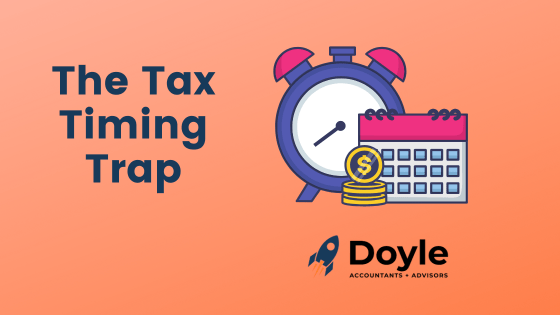Property developers often face a challenging financial reality: tax obligations can come due even when cash is nowhere to be found. This disconnect between taxable profit and actual cash on hand can create serious liquidity problems for unwary developers. Let's explore this scenario through a real-world example.
The Initial Success: A Profitable First Deal
Our property developer, let's call him David, identifies an opportunity in the market:
David purchases a property for $500,000
After renovations and holding costs, his total investment is $500,000 (for simplicity)
Within the same financial year, David sells the property for $700,000
The transaction generates a $200,000 profit
At this point, everything looks promising. David has turned his investment into a 40% profit, and he has $700,000 in cash. Based on a corporate tax rate of 30%, he would owe approximately $60,000 in taxes on this profit.
The Reinvestment: Setting Up the Next Deals
Buoyed by his success, David decides to reinvest his proceeds immediately:
He uses the entire $700,000 to purchase two properties at $350,000 each
His plan is to renovate and flip these properties for similar profits
The purchases occur before the end of the financial year
Tax on the $200,000 profit is not yet due, but the liability exists
The Market Shift: When Plans Go Awry
Unfortunately, the market takes an unexpected downturn:
In the following financial year, property values decline
David is forced to sell both properties for only $300,000 each
Total proceeds from both sales: $600,000
This represents a $100,000 loss compared to his $700,000 investment
The Tax Timing Trap
Here's where the disconnect between cash and tax becomes problematic:
The Tax Reality:
The $200,000 profit from the first year is still taxable in that year
At a 30% tax rate, David owes $60,000 in taxes
This tax obligation cannot be offset by the subsequent year's losses
The tax bill comes due after the financial year ends, when David has already reinvested
The Cash Reality:
David started with $500,000
After all transactions, he now has $600,000 ($300,000 × 2)
While this represents a $100,000 increase from his original capital, it's $100,000 less than what he reinvested
More importantly, he has no extra cash set aside for the $60,000 tax bill
Why This Happens: Tax Year Boundaries
This situation occurs because:
Tax is calculated per financial year: Profits and losses cannot be offset across different tax years
Tax recognition is not tied to cash availability: The tax system doesn't consider whether you still have the cash from your profits
Reinvestment doesn't defer tax liability: Unlike some tax-deferred exchanges, standard property flipping doesn't allow for tax deferral
The Liquidity Crisis
David now faces a serious problem:
He owes $60,000 in tax
His business has $600,000 in assets but these are tied up in inventory or future projects
To pay the tax, he might need to:
Sell another property potentially at a loss
Borrow money at interest
Liquidate personal assets
Strategies to Avoid the Tax Timing Trap
Experienced developers protect themselves from this scenario through several approaches:
1. Tax Provisioning
Always set aside cash for estimated tax obligations before reinvesting profits. In our example, David should have reserved at least $60,000 from his $700,000 proceeds.
2. Strategic Timing of Transactions
Sometimes closing deals in the next tax year can provide more time to generate the cash needed for tax payments from previous year profits.
3. Tax-Deferred Exchanges
In some jurisdictions, 1031 exchanges or similar programs allow deferral of capital gains taxes when directly reinvesting in similar properties.
4. Entity Structuring
Different business structures may offer options to carry losses backward or forward, though this varies significantly by tax jurisdiction.
Conclusion
This example illustrates a fundamental truth in property development: paper profits create real tax obligations, regardless of your current cash position. Successful developers maintain a disciplined approach to tax provisioning and cash management, ensuring they're never caught in the gap between taxable income and available cash.
For property investors, this underscores the importance of working with qualified tax advisors who understand the specific challenges of real estate development. By anticipating these tax timing issues, developers can structure their transactions and cash reserves to meet obligations without disrupting their business operations.
Contact Us
Contact Tim Doyle today to discuss on 07 827 9130 or email us. Our office is in Cambridge, NZ, but distance is no problem. We have many international and national clients.
This material has been prepared for informational purposes only, and is not intended to provide, and should not be relied on for, tax, legal or accounting advice. You should consult your own tax, legal and accounting advisors before engaging in any transaction.


